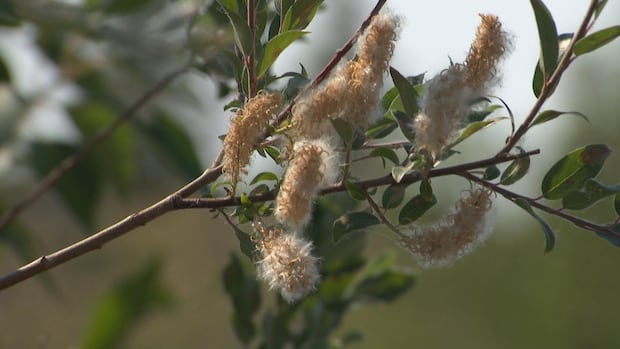[
Floating fluff? Summer snow? Cotton balls? If you’ve been noticing more of that white stuff floating around the N.W.T. this summer, you’re not alone.
“One thing I noticed is a buildup of that stuff in my yard,” Yellowknifer Justin Grandjambe said. “When it’s windy it kind of gathers in corners and stuff … almost looks like a little bit of snow.”
Turns out, that fluff is from trees dispelling their seeds.
It’s a stress response from the poplars, aspen and willows reacting to the dry conditions from the past few years, according to the N.W.T.’s department of Environment and Climate Change (ECC). Within each fluff ball is a bunch of tiny seeds.

The department’s experts couldn’t say how much more “fluff” there is this year compared to other years. That’s something that might also vary depending on where in the territory you’re looking.
In an email, ECC spokesperson Thomas Bentham said trees become more stressed as drought conditions persist. Although water levels in the territory have seen some recovery this year, the N.W.T. has experienced drought conditions since 2022 and the cumulative impacts are causing the trees to disperse their seed.
Sally Aitken, a professor in the department of forestry at the University of British Columbia, said it’s a way for trees that are under environmental stress to maximize the survival chances of some of their offspring. The trees that produce that “stress crop” are at risk of dying from drought, and are more vulnerable to things like pests and disease.
The N.W.T. government notes an increase in both drought mortality and tree decline from bugs and pests in its most recent forest health report from 2023.
The 2023 report recorded 684 square kilometres of “drought stress and mortality,” though surveyors suspect the actual damage to be far greater since the surveys were done in June and July and hot dry weather continued through the summer.
That’s compared to the 2022 survey, which doesn’t mention drought mortality at all and notes only 31 square kilometres impacted by drought and “heat stressed foliage” — though only the North Slave, South Slave and Dehcho regions are listed.
Stressed trees could still recover
But Aitken says there’s hope yet.
With so many seeds floating around — and travelling far distances thanks to the fluff — the tree species that dispel their seeds are better at adapting to climate change as they reproduce.
“What it means is that you will get a mixture of, sort of, genetic backgrounds of seeds arriving in any place and then selection will favour those that are better adapted to that environment,” she said.
Aitken said the seed dispersal could also be a normal response to warm weather. Trees in higher latitudes, like the Northwest Territories, produce seeds based on conditions from the previous year and the fluff could be the result of last summer’s heat.
“That’s one of our challenges with figuring out any of the biological changes we observe in an individual year, whether they’re related to extreme events that are the result of climate change or whether they’re just part of the normal range of variation that we see year to year,” she said.
“Even if it is a stress crop, the trees might recover,” she said.
Though Bentham acknowledged that ECC has found drought mortality in its forest health report, he said the fluff doesn’t necessarily mean the trees will die. He said with rain, they are likely to recover.
